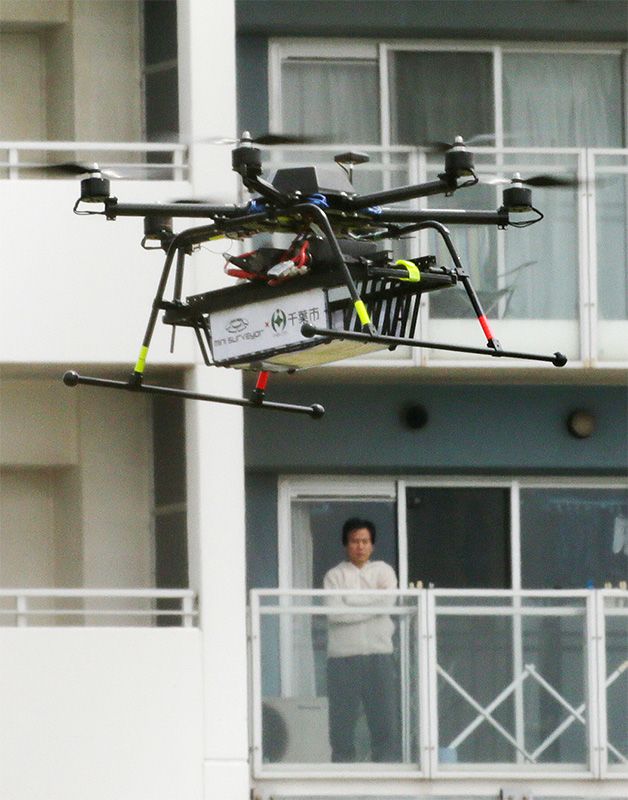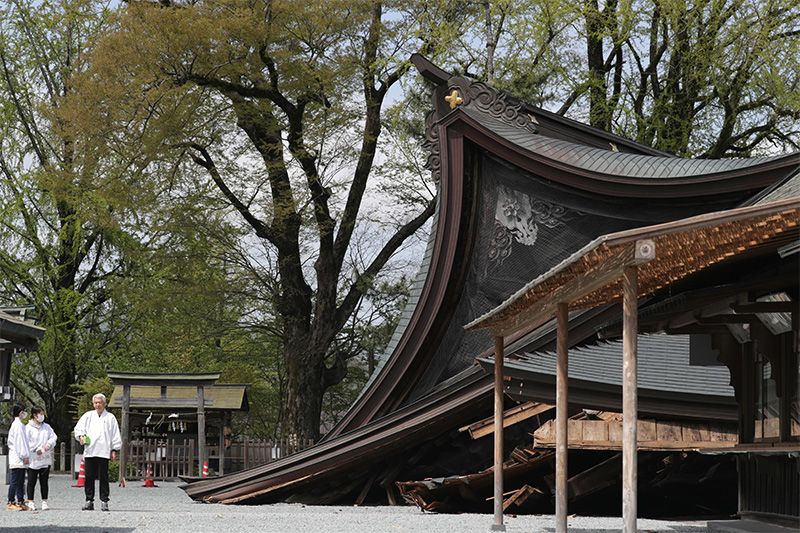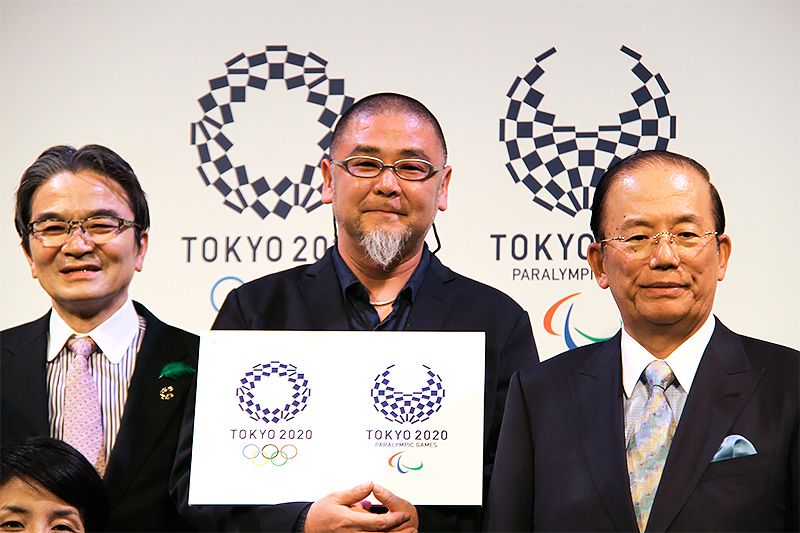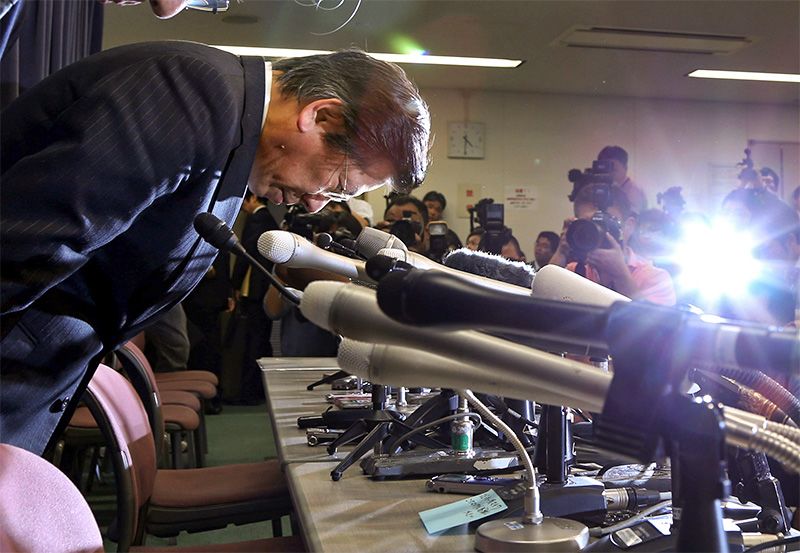Timeline for April 2016
Politics Economy Science Technology Society- English
- 日本語
- 简体字
- 繁體字
- Français
- Español
- العربية
- Русский
1
A new system liberalizing the sale of electricity to ordinary households comes into effect. A range of new suppliers enter the ¥8 trillion market, which has been monopolized until now by 10 major power utilities.
Kansai International Airport and Osaka International Airport (also known as Itami Airport) become the first Japanese airports to be privatized. They are acquired by Kansai Airports, a company established by a consortium including Orix and the French corporation Vinci Airports.
The Bank of Japan’s Tankan report for March reveals a major deterioration of business sentiment among large manufacturers. The slowing down of economies in China and other emerging nations and the appreciation of the yen are seen to have cooled sentiment across a range of industries that rely on exports.
2
Taiwan’s Hon Hai Precision Industry (which trades as Foxconn) formally completes its acquisition of Sharp. By October this year, it will pay ¥390 billion for a 66% stake in the first foreign takeover of a major Japanese electronics company.
4
Shinjuku Expressway Bus Terminal opens outside the south exit of Shinjuku Station in Tokyo. The terminal is the largest in Japan, with 1,600 services departing and arriving each day to carry a projected 40,000 passengers. It includes a tourist information center offering assistance in Japanese, English, Chinese, and Korean.
6
A U-125 search-and-rescue jet carrying six Self-Defense Force crew members goes missing near the Kanoya Air Base in Kagoshima Prefecture. The debris of the vehicle and the bodies of all six crew members are discovered by April 8.
7
Seven & I Holdings Chairman and Chief Executive Officer Suzuki Toshifumi announces that he plans to step down after the company’s board rejects his proposal to replace the president of the group’s Seven-Eleven convenience store chain. In 1974, Suzuki opened Japan’s first Seven-Eleven franchise store, building the company into a nationwide chain with 19,000 outlets.
The dollar trades in the upper ¥107 range as the Japanese currency rises to its highest level since the Bank of Japan announced further quantitative easing in October 2014.
8
Swimmer Kitajima Kōsuke announces his retirement at the age of 33 after failing to qualify for the 2016 Summer Olympic Games in Rio de Janeiro. Kitajima won Olympic gold medals in the men’s 100- and 200-meter breaststroke in both the 2004 games in Athens and the 2008 games in Beijing.
Investigators from the Tokyo District Public Prosecutor’s Office search the offices of the Urban Renaissance Agency in Inzai, Chiba Prefecture, and other locations related to the bribery allegations surrounding former Minister for Economic Revitalization Amari Akira. They also question a former aide to Amari.
10–11
The Group of Seven foreign ministers’ meeting is held in Hiroshima. On April 11, US Secretary of State John Kerry and other G7 foreign ministers visit the city’s Peace Memorial Park and lay wreaths at the cenotaph, which commemorates those who died in the 1945 atomic bombing of the city. The ministers release a joint statement on nonproliferation and disarmament.
11
Drone delivery service trials take place in Makuhari in the city of Chiba. In one of these, a drone succeeds in carrying goods from the roof of a shopping mall to a nearby apartment building. Monthly trials will continue with the aim of making drone delivery a reality by 2019.
 A drone taking part in a delivery service trial flies through a residential area in Makuhari in the city of Chiba on April 11, 2016. (© Jiji)
A drone taking part in a delivery service trial flies through a residential area in Makuhari in the city of Chiba on April 11, 2016. (© Jiji)
14
A magnitude 6.5 earthquake takes place in Kumamoto Prefecture and is followed by a series of temblors, including what is later identified as the main quake, a magnitude 7.3 event on April 16, causing devastation in the surrounding area. Around 200,000 residents evacuate their homes in Kumamoto and Ōita Prefectures. As of April 30, a total of 49 are dead, with 17 additional deaths counted as “quake-related,” and one is still missing. Nearly 45,000 homes are left damaged. The two most powerful earthquakes both reach a seismic intensity of 7, the strongest local shaking recorded since the Great East Japan Earthquake of 2011.
 The collapsed gate at Aso Shrine in Aso, Kumamoto Prefecture, on April 17, 2016. (© Jiji)
The collapsed gate at Aso Shrine in Aso, Kumamoto Prefecture, on April 17, 2016. (© Jiji)
Former Air Self-Defense Force Chief of Staff Tamogami Toshio is arrested for suspected violation of the public offices election law. At the time of the February 2014 Tokyo gubernatorial election, Tamogami is thought to have paid ¥2 million to his election campaign secretariat chief and a total of ¥2.8 million to five more staff members.
20
Mitsubishi Motors admits that it has manipulated fuel efficiency data for 625,000 vehicles since June 2013. The data for four models sold in Japan was falsified so that it appeared vehicles were 5%–10% more fuel-efficient than was actually the case. Two of the models were produced for Nissan, which brought the discrepancy to light.
Japan falls 11 places to 72nd position in the Press Freedom Index published by Reporters Without Borders. The international nongovernmental organization cites concerns about the increase in self-censorship in Japan in a report published on April 11. Japan has fallen steadily in the index since it was ranked 11th in 2010.
25
The 2020 Tokyo Organizing Committee of the Olympic and Paralympic Games unveils new official logos for the games, designed by Tokyo artist Tokolo Asao. After the original emblems were scrapped in September 2015, the organizing committee launched a competition to find replacements.
 The winning logos and their designer Tokolo Asao (center) at a ceremony held in Tokyo on April 25, 2015. (Photograph by Nishizawa Kazuhiko)
The winning logos and their designer Tokolo Asao (center) at a ceremony held in Tokyo on April 25, 2015. (Photograph by Nishizawa Kazuhiko)
26
Mitsubishi Motors admits that it has been producing incorrect fuel efficiency data for 25 years, after failing to adapt its tests to changes in regulations in 1991. Japan’s major media outlets unanimously report that Mitsubishi President Aikawa Tetsurō is taking responsibility for the problem and plans to resign.
 President Aikawa Tetsurō of Mitsubishi Motors bows in apology at a press conference in Tokyo on April 26, 2016. (© Jiji)
President Aikawa Tetsurō of Mitsubishi Motors bows in apology at a press conference in Tokyo on April 26, 2016. (© Jiji)
Australia’s Prime Minister Malcolm Turnbull announces that the Australian navy has selected the French shipbuilder DCNS as winner of a $40 billion contract to build its fleet next-generation submarines, over rival bids from Japanese and German competitors. The Japanese government had hoped to make this its first major overseas military procurement contract following a 2014 relaxation of the Three Principles on Arms Exports.
28
The Bank of Japan wraps up its two-day Policy Board meeting with a decision to hold off on additional monetary easing measures. The bank also amended its target for achieving stable inflation (a sustainable 2% rise in the consumer price index), postponing it from the first half of fiscal 2017 (April 2017–March 2018) to sometime within the fiscal year. Markets reacted with disappointment, with the Nikkei index plunging more than 600 points to 16,666.05 at day’s end.
29
The Kyoto Railway Museum, one of the largest such facilities in Japan, opens in the Shimogyō district of Kyoto. The museum, expanded from the Umekoji Steam Locomotive Museum previously on the grounds, houses a Japan-leading 53 carriages, including everything from old locomotives to Shinkansen cars.
 Exhibits at the Kyoto Railway Museum. Top: a Class 230 locomotive, the first steam locomotive mass-produced in Japan. (Photographs by Kodera Kei)
Exhibits at the Kyoto Railway Museum. Top: a Class 230 locomotive, the first steam locomotive mass-produced in Japan. (Photographs by Kodera Kei)
earthquake Mitsubishi electricity economy Kumamoto industry Hiroshima G7 Olympic drones